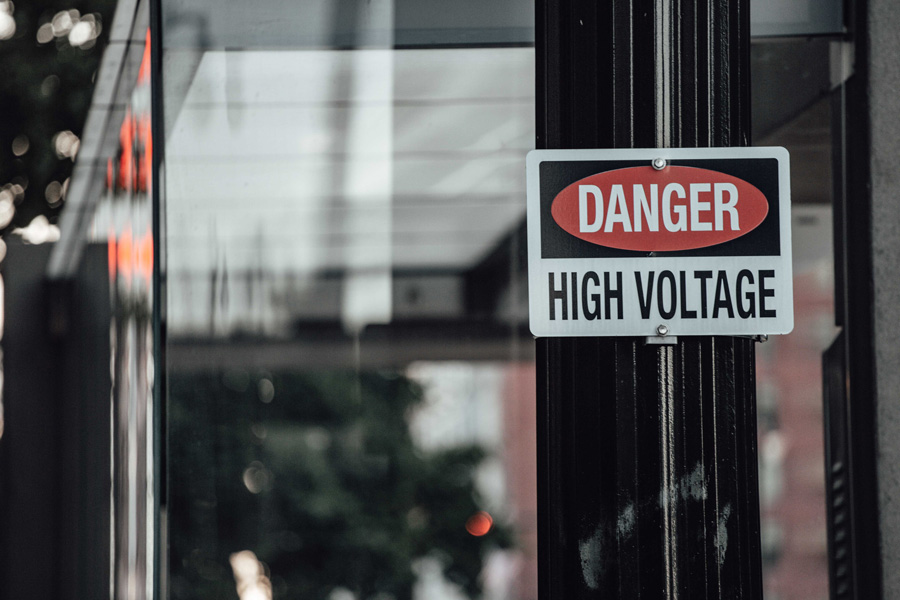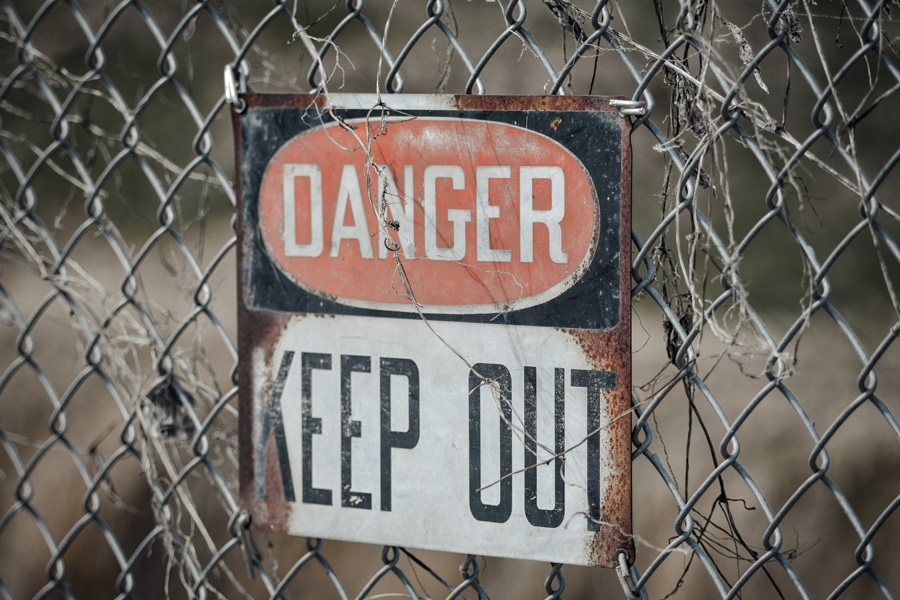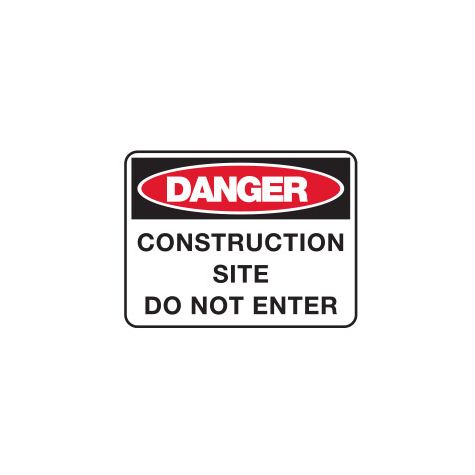The humble danger sign: Keeping Australians safe

Whilst occupational dangers exist in every industry, there is perhaps no greater workplace in need of clear and concise safety signage than a construction site.
A short visit to any building site will reveal countless examples of eye-catching, bold and brightly coloured reminders for us to keep ourselves safe.
Hi-vis vests, COVID marshalls and reminders to wear hard hats are a dime a dozen in most commercial construction zones. Arguably, though, none of these are as vital as the 'danger sign'.
Safety signs – What are they?
Safety signs are designed to efficiently communicate a clear and important message to the reader.
There are six main categories of safety signs commonly used in the occupational environment:
- Prohibition signs: Signs telling you what you CAN’T do (No entry, no smoking, etc).
- Mandatory signs: Signs informing you of something that you MUST do (for example “Eye protection must be worn in this area”).
- Fire signs: Signs that easily identify the location of firefighting equipment.
- Emergency information signs: These point out the location of First Aid kits, emergency exits, etc.
- Warning signs: Accident prevention - a sign letting you know of a hazard ahead that may pose harm if ignored (ie “slippery when wet”).
- Danger signs: Warning you of a potentially life-threatening hazard or hazardous conditions.

What is so important about danger signs?
The danger sign exists for use in the most extreme situations and, by its very use and design, is easily identifiable as a serious warning that MUST be heeded.
It is important that these signs are reserved for those occasions when the danger has a very real possibility of causing life-threatening injuries if caution is not taken. If the hazard could reasonably be expected to lead to non-fatal accident or injury, perhaps the more common “warning sign” may suffice.
In terms of design, the danger sign is simple but striking. The Australian Standard for Safety Signs for the occupational environment (AS 1319) recommends a particular look: The word “DANGER” (capital letters) printed in white font, set inside a red oval, and placed on a black background.
The word DANGER may be followed by a further descriptive message, printed in either white letters on a black background or black letters on a white background. This message should be short and concise, giving the reader immediate clarification of exactly what type of hazard may await them, and thus prepare them to properly protect themselves.
 Examples of commonly seen danger signs may include:
Examples of commonly seen danger signs may include:
- DANGER: High Voltage
- DANGER: Keep Out
- DANGER: Exclusion Zone
- DANGER: Asbestos Removal in Progress
- DANGER: Unsupported Ground
- DANGER: Live Wires
- DANGER: Do Not Enter
- DANGER: Keep Off
- DANGER: Demolition Work in Progress
- DANGER: Crane Working Overhead
- DANGER: No Smoking
- DANGER: No Entry – Authorised Persons Only
The sign may be made from coreflute, metal, poly or self-adhesive vinyl, allowing for easy and bold display on virtually any surface or location. Metal signs are usually weather-resistant and ideal for outdoor use, whilst fluted plastic has less outdoor longevity but is much lighter to work with.
Why are danger signs so important?
Danger signs are a simple yet essential tool in the quest for accident prevention and OHS compliance on a job site.
Displaying adequate and relevant signage will ensure that your workers, site visitors and the general public are quickly made aware of any hidden yet potentially serious hazards. Sometimes these hazards may be hidden or invisible to the naked eye (such as electricity, asbestos, or unstable footings).
Limiting the use of this signage (along with giving consideration to whether another category of sign may be more appropriate) supports the danger sign in retaining its crown as the most serious of all signs.
Australian businesses have a moral and legal obligation to ensure that Health & Safety legislation is always adhered to, thus playing their part in ensuring that all Australians can return home from work safely. This legislation governs the type, design, and appropriateness of safety signage, and is designed to protect everyone.
For more information on the appropriate use of safety signage, contact your local WH&S advisor or visit www.safeworkaustralia.gov.au/construction.
Buy danger signs from Jaybro
If you are in need of danger signs for your construction site or premises, visit our website to browse the Jaybro range. Alternatively, contact us on 1300 885 364 to find out how we can keep your team safe.
 Sign In
Sign In 







